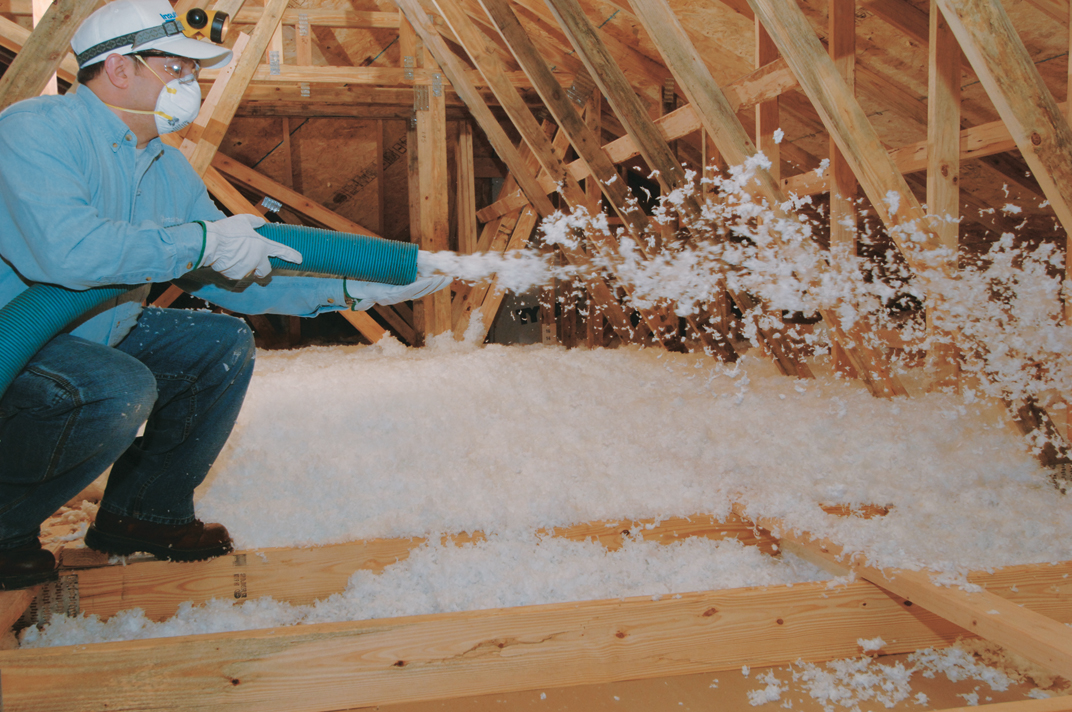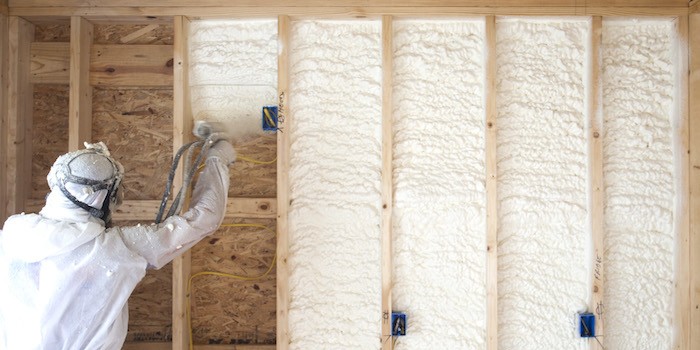It’s starting to cool off as we approach the fall and then the winter. Depending on what part of the country you are in, this time of year is either a blessing or one of the most miserable times of your year. It’s the type of misery that leaves you wishing for summer; although it is always funny that those same people are usually wishing for winter when the summer heat is in full swing. It’s a vicious cycle my friends.
So here we are, approaching maybe the best time to look into better insulation since the outdoor weather is cooling off and you can crack a window or two without worrying about your energy bill skyrocketing. But what is best for you? Before you even consider which insulation is best, figure out if you will actually benefit from insulation and where to focus. An easy way to figure this out is through the use of an Infrared Camera, or IR Camera, which will show you a clear image of temperature differences in your home (see images below). You can get very handy ones that plug right into your phone or you can buy a dedicated system, either way it’s going to cost you some cash. Getting a professional HVAC contractor to come out is many times cheaper and they come with additional knowledge to help you make the best decision.

Now that you have checked it out, you find that you will in fact benefit from insulating your home. There are various options available to you that vary in complexity from DiY to Professional required. Let’s cover 3 of the common types:
1. Batt Insulation ($)
- Fiberglass Batt Insulation: (Experience Required = DiY)
- This is probably the most common type of insulation and what people think of when they hear insulation for a home. It’s pretty simple stuff for any skill level (roll it out and cut to length with a utility knife, then throw it in place) but you need to understand how this stuff works to get the most effectiveness. This insulation is not meant to be crammed into place, it is meant to freely fit inside wall cavities and floor joists. Common areas where the installation goes wrong occur around plumbing and electrical boxes. Instead of taking 10 extra seconds to cut out a slot for the insulation to sit tightly around these areas, people will smash the insulation and force it around them. This changes the depth of the insulation and therefore the effectiveness. The thicker the insulation, the greater the R-value as air has an easier time passing by/through 1 inch of insulation compared to a full 3.5 inches.
- This brings us to another potential problem. Homeowners are aware of the R-value rating system, for the most part, so they understand that a higher number means better insulation means more energy savings. However, DO NOT cram R-19 into your walls that are built with 2×4 lumber. Yes the R-value is higher, and yes you can cram it in there, but you are only going to pay more money on R-19 to get the same effectiveness as R-13 or R-15 which is meant for the 2×4 walls. Luckily the brands have made it easy on us and placed the stud size right on the package.
- Faced or Unfaced? This depends on where you are applying the insulation for your home. Many people probably think the faced insulation is used so you don’t come into contact with the fiberglass and start itching or simply a premium for easier installation since you can fold the paper tabs out so they rest along the stud and fasten it in place. In reality, the paper face on the insulation is used to provide a vapor barrier. Unfaced insulation is used where a vapor barrier is already in place so you do not need another one. The paper will always go to the conditioned side (or interior) of the home.
- Rockwool Batt Insulation: (Experience Required = DiY)
- Almost identical to fiberglass except Rockwool is more fire resistant and in many cases has a higher R-value. Also, like the wool we all know, it retains moisture so you should look elsewhere if you are even slightly concerned with a damp environment for this installation. You do not want mold and mildew.
- Cotton Batt Insulation: (Experience Required = DiY)
- Until recently, I had never seen this and I was a little confused when I first saw it. It comes in a blue color and reminded me a lot of a cross between blue jeans and carpet padding. It costs a bit more than the traditional fiberglass but it’s not going to leave you itching.

2. Loose Fill Insulation ($$)
- Fiberglass Loose Fill Insulation: (Experience Required = Skilled DiY or Professional)
- This is a great addition to an attic where you can really see huge dividends in energy savings and comfort. It’s the light and fluffy stuff that gets blown into the attic and fills between ceiling joists. This helps maintain a consistent temperature throughout the home. The ceiling provides ample opportunity for hot and cold spots if the conditioned air you are trying to supply is constantly fighting off outside temperatures that are making it through via uninsulated areas of your attic. Sure there is a 1/2″ or 5/8″ sheet of drywall between the living area and attic but that doesn’t stop outside temperatures from plaguing your home.
- This is also a great insulation method for walls that are already finished. Exterior walls are where you can see the biggest energy savings if the builder skimped out on insulation and you have room for improvement. Insulating interior walls won’t provide the energy savings but can help with sound deafening in rooms next to areas like the garage, laundry rooms, bathrooms, entertainment rooms, etc.
- Cellulose Loose Fill Insulation: (Experience Required = Skilled DiY or Professional)
- This is a little heavier than the fiberglass so you need to make sure your ceiling can support it. It is recommended that your ceilings use 5/8″ drywall or you have rafter/truss spacing of 16″. You run the risk of sagging the drywall and possibly worse as the ceiling will be under stress.
- Due to its heavier weight, it can settle and compress which has the same negative effective as cramming in batt insulation; less depth = less effectiveness.
- Cellulose has a higher percentage of recycled products and has some fire retardant properties.

3. Spray Foam ($$$)
- Spray in Foam: (Experience Required = Professional)
- This is one of the best insulation options in terms or R-value and energy savings but it comes at a price. One, it’s going to cost a premium because you need to have it installed by a professional and you are paying for better energy saving potential. Two, you need to allow the foam adequate time to cure before re-entering the home due to the VOCs and off gassing of other chemicals. The push for low VOC’s has decreased the amount of time you need to be outside of your home before re-entering.
- It can be used virtually anywhere. Anyone who has seen the videos of it being applied knows how neat this stuff looks but its best suited in the new build phase if you want walls insulated. Attics aren’t so difficult as long as there is adequate clearance to move around and unfinished basements with exposed ceilings could be an option.
- Open Cell stops air but allows moisture to pass by.
- Closed Cell stops both air and moisture from passing through.

Your insulation options aren’t limited to just these as there are alternatives such as insulation board. Your best bet is to get a second opinion from a professional who can walk through your home with you and show you how your home is performing via an infrared camera. That same camera can also help you uncover leaks that are damaging your home without you even knowing it. While some upgrades seem obvious and simple, you may be aimlessly putting your efforts towards things that will provide very little to no actual benefit for you. And since any upgrade requires product, which requires some investment (no matter how small or great), wouldn’t you rather know your money is actually being put to good use? You might be surprised at what you uncover. While an HVAC contractor might seem like the most unlikely place to look when questioning your insulation needs, make sure to ask when you are scheduling your fall/winter furnace tune up. It doesn’t necessarily fit the bill of Heating Ventilation Air Conditioning (HVAC) from a naming point of view but insulation is directly linked to indoor comfort so it does play a significant role in their jobs. I am positive that any contractor would be more than happy to bring out an infrared camera or other testing equipment.
